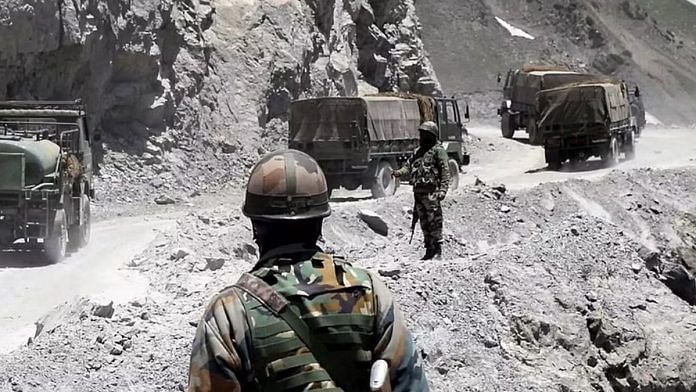The question of reduction in the number of troops in the Kashmir Valley has once again come up as a discussion point within the Narendra Modi government. This is not the first occasion or period when the issue vexes the South Block. But the question needs to be analysed across the road as well and cannot be addressed dispassionately unless both blocks are united on the matter. The North and South Blocks differ in their approach to the security question, and addressing workforce matters is just one aspect of the issue. The latest proposal implies that the Army would only retain its operational role on the Line of Control, where a ceasefire holds firmly thus far. There would be limited Army presence in active counter-insurgency operations, and its role over time will be taken by paramilitary Central Reserve Police Force soldiers.
The proposal, as it stands, certainly has merit, for any troop rationalisation must be welcomed. But the rider remains that the motives must be operational logic and not monetary as workforce expansion continues elsewhere.
Essentially, the government is giving two lines of reasoning to explain the reduction in the number of troops. The first, obviously, is the simpler one about enough improvements in security in Kashmir. This cannot be challenged since the number of active militants in Kashmir has steadily dropped over the last two decades. Several State-sponsored studies and reports explain this decline. That is also why the demand to reduce Army presence has cropped up every now and then. But due to the cyclic nature of Kashmir’s problems, something always thwarts further developments.
Also read:9,400 fresh troops for LAC a message to China—loud and clear
Gather the tinder, light the fire
Every insurgency has a root cause based on political and/or administrative lapses and machinations. It is futile to blame external players for the whole problem since the volatile situation is largely created internally. The tinder is gathered when there are continual domestic lapses, and thereafter, a pernicious player finds it easy to light a fire and fan the flames of fanaticism. In all such situations, the military’s role is limited to bringing the violence down, following which it is for the political leadership to steer the situation amicably.
There is no rocket science involved in this formula — it has been essential knowledge since the origins of insurgency and its eventual elimination. And no one has explained it better or more simply than retired British Army officer and writer Frank Kitson in his 1971 book Low Intensity Operations: Subversion, Insurgency, Peace-Keeping. Based on his operational experiences during two insurgencies — the 1952 Mau-Mau uprising in Kenya and the 1948 Malayan Emergency — Kitson has penned his thoughts and theories intelligibly and dispassionately. He was decorated for both campaigns, and, in fact, the citation for the Bar to his Military Cross captures the essence of his theories unreservedly.
Two pillars of counter-insurgency
Counter-insurgency is entirely a company commander’s campaign, and a successful one begins with a grid of outstanding small-unit tacticians who are then supplemented by an excellent local intelligence network. A good combination of these two elements allows the State to contain the violence, which is all that the military can do. In the case of Kashmir, since India has completely forgotten its older and malignant insurgencies, this grid was provided by the excellent performance of the Rashtriya Rifles (RR) company commanders with support from an outstanding Jammu & Kashmir Police information network. Little wonder that the jihadis took to Pakistan-style targeted killings.
Much is being made about reducing RR strength by cutting the number of companies. But given the Indian ailment of selective or no memory, RR was, in any case, temporary in its origins. Officers and soldiers were to be taken on deputation from their parent units, trained in the essentials of counter-insurgency field craft, and then made to create that vital grid of excellence. In the beginning, officers certainly did outstanding service and those that followed subsequently built on that platform. The losses suffered and decorations earned by both institutions over the last three decades are testimony to the soldiers’ contributions.
Given that the essential nature of India’s bureaucracy is expansionist, and ably assisted by a largely ignorant political class, the Army was not to be left behind. The military bureaucracy devised an ingenious method of metamorphosing the RR into permanence, with regimental affiliations and directorates. Even as the number of insurgents waned over the last two decades, RR units, sector and force headquarters expanded. Fearful politicians find it easy to justify that expansion. The larger picture of national security always sells stories, but there is a hidden message in this latest episode.
Much has been made over the improved security conditions in Kashmir since the removal of Article 370 in 2019, thus rationalising RR numbers. Not to forget the fanfare about military pension savings in the defence budget and the severe cutbacks in recruitment over the last two years. But there is a very real thought that India does not have the stomach for a fight, for it is cutting back on its ultimate weapon, the Army’s foot soldier, even as it expands its supporting cast for the Tibetan frontier — with 9,400 fresh troops in the Indo-Tibetan Border Police. It is essentially declaring that New Delhi will pay for a holding force but not for an assault-capable Army.
Manvendra Singh is a Congress leader, Editor-in-Chief of Defence & Security Alert and Chairman, Soldier Welfare Advisory Committee, Rajasthan. He tweets @ManvendraJasol. Views are personal.
(Edited by Humra Laeeq)



